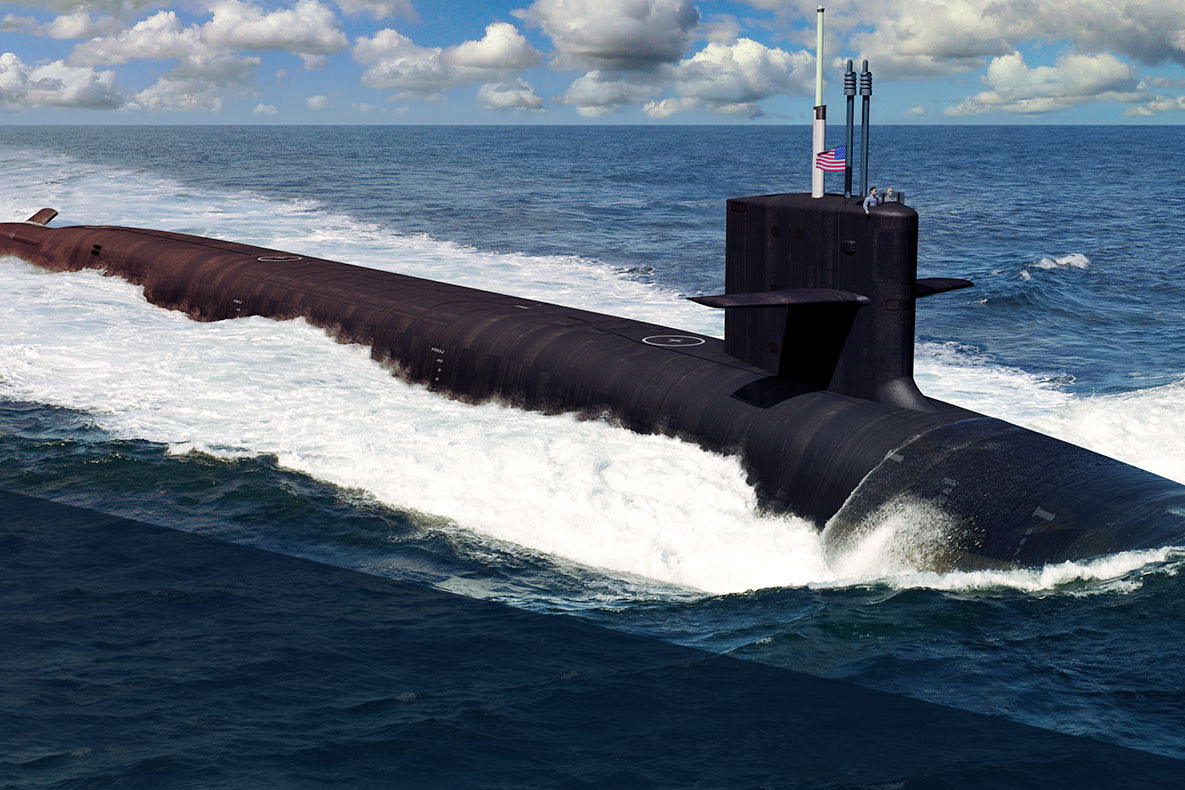A team of engineers led by UConn engineering professors Yang Cao and Ali Bazzi is conducting groundbreaking research on electric propulsion, moving the U.S. Navy closer to a shift in how submarines are powered.
With funding from the U.S. Department of Defense and Department of Energy, the researchers are developing electrical insulation for use in the manufacture of Next Generation Integrated Propulsion System (NGIPS) motors for military electric propulsion that will provide 50 percent higher power density.
The U.S. Navy is currently shifting from mechanical drive to electric drive in many propulsion systems for combat ships, just as plug-in electric vehicles run on electrical motors. The first modern electric drive submarine will be the Columbia class submarine, which replaces the Ohio class. The Columbia class is scheduled to begin construction in 2021 and enter service in 2031.
“On a nuclear submarine, space is tight,” says Cao, associate professor of electrical and computer engineering. “In order to fit electric drive systems in [the next generation attack class submarine], electric drive components will all need to be smaller.”
The improved insulation material enables the motor to be much smaller. Without it, says Cao, it would be almost impossible to fit electric drive propulsion systems on these future attack class submarines.
Since the cost is roughly in proportion to the volume of the electric machine, reducing the size can also save money. As one of the world’s largest single energy consumers, the U.S. Department of Defense uses about 30,000 GWh of electricity annually, at a cost of nearly $2.2 billion.
Electric motors are easier to control than internal-combustion engines, while also saving energy.
But while integrated electric-propulsion drive systems operate at high power and high frequency, the performance and reliability of these systems depends on their ability to efficiently dissipate thermal energy from the electronics and machines during operation.
Conventional insulative materials used in these systems to withstand high voltages are also good thermal insulators that prevent such heat dissipation.
The UConn team has developed a new 2-D, nanostructured dielectric material with highly improved electrical and thermal characteristics. This material has demonstrated, without redesign, a 15 percent improvement in torque density of the motor on a DDG1000, the first all-electric battleship.
General Dynamics Electric Boat considers the program “revolutionary,” wrote James R. Moody, director of business development, payloads and sensors at Electric Boat, in a 2015 letter supporting UConn’s application for a grant from the Office of Naval Research.
Electric Boat’s in-kind support has involved evaluating the impact of thermal performance improvement on motor power density, and assessing the technology’s readiness for Naval shipboard applications. The team will be working for two more years on this program to fully demonstrate that the materials they’re developing will produce similar savings in the real world.
The goal is to further optimize the system to generate 20 percent more torque, and complete the accelerated aging test to ensure high service reliability. “This could be game-changing,” says Cao.
The new technology also has advantages for national security, according to Bazzi, UTC assistant professor of engineering innovation in electrical and computer engineering at UConn.
Typically, the U.S. imports strong magnets that contain rare-earth elements, but induction machines are independent of these elements and are easier to control, Bazzi says. One downside is that they have slightly lower efficiency and lower power density than their permanent magnet machine counterparts.
“Improving the power and torque densities of induction machines would make them more competitive in terms of size, ease of control, and supply chain from a national security perspective,” he says.
Electric propulsion also has the potential for commercial applications beyond electric cars and buses.
“This is just the first application,” Cao says, noting that the military is very interested in dual-purpose research. “If this research can be used by industry, this would help expand the supplier base, provide jobs, and potentially lower the cost for the Department of Defense. If this could be further extended to much broader, civilian applications, the impact could be huge.”
Cao and Bazzi continue to develop these technologies through the National Institute for Undersea Vehicle Technology (NIUVT), a collaboration between UConn, the University of Rhode Island, and General Dynamics Electric Boat.



